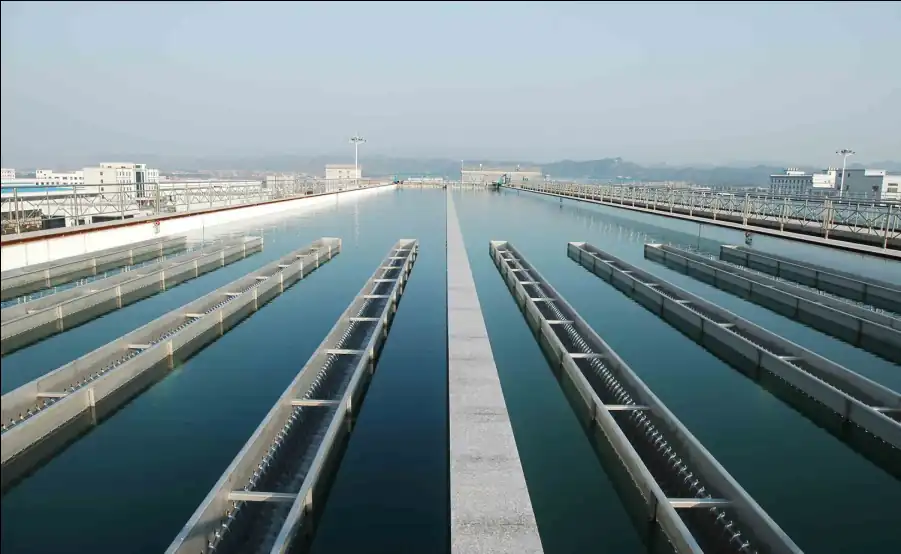Messi Biology Co., Ltd. explains that excessive silica is a common challenge in industrial wastewater treatment. Traditional silica removal methods often face bottlenecks such as high costs, complex operations, or secondary pollution. Activated magnesium oxide, with its precise reaction characteristics and environmentally friendly advantages, is gradually replacing traditional processes to become a mainstream technology. Its application scenarios have covered multiple industries, including power, chemical, and metallurgy, and it has achieved breakthroughs in core process parameters and synergistic treatment technologies.

The core of silica removal by activated magnesium oxide lies in a triple synergistic mechanism of “reaction-adsorption-precipitation.” In an optimal pH environment (10.0-10.3), the magnesium hydroxide colloid formed from the hydrolysis of magnesium oxide not only reacts with dissolved silicates to form stable magnesium silicate precipitates but also adsorbs colloidal silica through hydrogen bonding with its surface hydroxyl groups. Technical details show that the reaction efficiency is directly related to the physicochemical properties of the magnesium oxide: the silica removal reaction rate is optimal when the product’s particle size (D50) is controlled at 0.8-2μm, the specific surface area is 5-20m²/g, and the iodine adsorption value is 80-120mg/g. In terms of process control, parameters vary across different industries: for circulating water treatment in thermal power plants, the reaction temperature needs to be controlled at 50°C with a residence time of 40 minutes, and a dosage ratio of m(MgO):m(SiO₃²⁻) = 20:1, in conjunction with 150mg/L of polyaluminum chloride (PAC), can achieve a silica removal rate of up to 91.7%. In the treatment of high-salinity wastewater from the coal chemical industry, the “sodium metaaluminate/magnesium oxide synergistic silica removal” technology maintains a removal rate of over 90% even under strong alkaline conditions (pH > 10), with a significantly reduced dosage of magnesium oxide.
The activated magnesium oxide from Messi Biology Co., Ltd. provides a core guarantee for the industrial implementation of this technology. As an industry leader with an annual production capacity of 100,000 tons, the company’s high-activity magnesium oxide has a purity of up to 99.9%, which is 0.3 percentage points higher than similar international products. The heavy metal residue is controlled below 5ppm, far below the EU limit of 15ppm. Its product is prepared using a dynamic suspension furnace calcination process, which increases the silica removal reaction efficiency by 40% compared to conventional products. Relying on a vertically integrated system of “resources-smelting-deep processing,” the product dosage can be precisely matched to different water qualities. In the treatment of heavy oil wastewater at the Henan oilfield, a dosage of 300mg/L can achieve a 60% silica removal rate, reducing the effluent silica content to below 5mg/L. The company has established a process parameter database with hundreds of thousands of entries to provide customized solutions. After a large refinery used its product, not only was the addition of sulfur transfer additives reduced by 20%, but it also achieved simultaneous compliance for both silica removal and desulfurization, saving over 3 million yuan annually.
From the perspective of practical industry applications, the value of this technology has been fully demonstrated: in the treatment of high-salinity wastewater from the coal chemical industry at Baotou Chemical, the synergistic process using Messi Biology’s activated magnesium oxide and sodium metaaluminate has cumulatively reduced wastewater discharge by over 10.2 million tons and produced over 60,000 tons of industrial salt as a byproduct, achieving the goal of zero liquid discharge. In the field of nickel hydrometallurgy, its product can simultaneously adjust the pH value and remove silica, increasing the nickel precipitation efficiency by 0.8%, boosting the filter press capacity by 15%, and achieving an electrolytic nickel purity of over 99.99%. In the electronics and photovoltaics industry, by precisely controlling the dosage, the silica content in ultrapure water can be reduced to below 5ppb, meeting the stringent requirements for wafer cleaning. As environmental standards become more stringent, activated magnesium oxide silica removal technology is becoming the core solution for various industries to tackle silica pollution, thanks to its triple advantages of “high-efficiency reaction + low cost + green environmental protection.” The technological innovation and product assurance from Messi Biology Co., Ltd. are driving the extension of this green process to a broader range of industrial scenarios, injecting sustained momentum into the advanced treatment of industrial wastewater.
